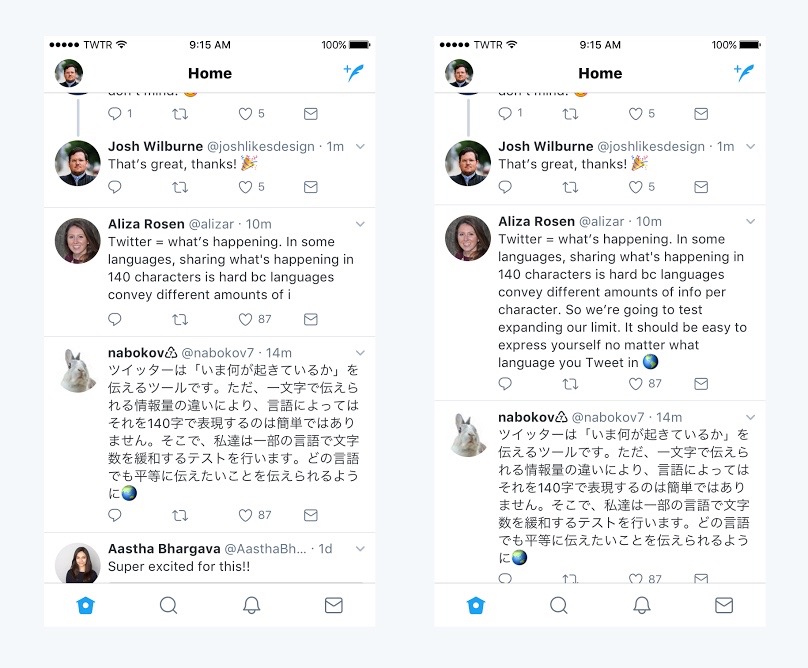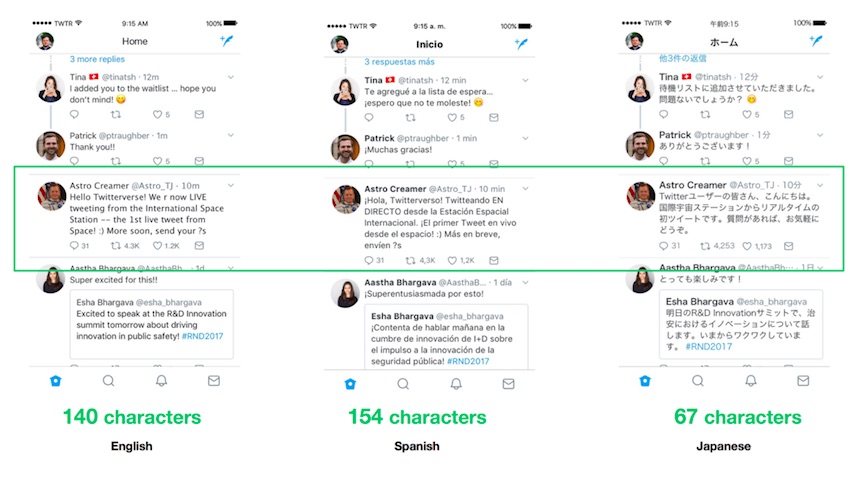Twitter is testing longer tweets up to 280 characters
Double the standard 140-character count, but you still can't edit

We've all been there. You leave out a crucial word or resort to "bc" or simply don't send a tweet because you can't get the nuance of your message across in 140 characters. The character limit has been a major sticking point for Twitter and its users, but today, that changes. Sort of.
Twitter has announced that it's running a small test in which the character limit of tweets will expand from 140 to 280. That's double the characters users have up until now been afforded to play with.
The reason for the change, Twitter explains in a blog post, is that in some languages, namely Chinese, Japanese and Korean, users are able to convey a message with fewer characters. In other languages, such as English, it typically takes many more characters to convey the same message.

Twitter has found that just 0.4% of tweets in Japanese hit the 140-character limit. By contrast, 9% of tweets in English do. Most tweets in Japanese are 15 characters long, Twitter said, while in English, tweets average 34 characters.
Twitter's change is about giving all users around the world ample room to tweet, which should lead to an increase in the number of tweets being sent overall.
"Our research shows us that the character limit is a major cause of frustration for people Tweeting in English, but it is not for those Tweeting in Japanese," Twitter said. "Also, in all markets, when people don’t have to cram their thoughts into 140 characters and actually have some to spare, we see more people Tweeting – which is awesome!"

The extended character limit is being tested in all the languages "impacted by cramming", Twitter said, meaning tweets in Chinese, Japanese and Korean won't be included in the test.
Get daily insight, inspiration and deals in your inbox
Sign up for breaking news, reviews, opinion, top tech deals, and more.
Twitter maintains it is still all about brevity, and that a 280-character limit allows it to keep delivering information in bite-size pieces.
TechRadar editor John McCann is one of the lucky ones to have been included in Twitter's test. He notes there's a new icon to show you when you're nearing the 280-charcater limit. A circle next to the "Tweet" button fills up as you type, turning orange and displaying a countdown as you reach the limit and red when you've gone over.
The new icon to show how many of the 280 characters you've typed is a circle that fills up the more you type. When you near the limit it gives you a remaining countdown. Goes red when you've said too much. pic.twitter.com/XD0mBaTisNSeptember 26, 2017
A big change for Twitter
It seems a given that Twitter will roll the longer character limit out as an official feature to every user eventually, but it is, wisely, taking the time to test this out with a small group, gather feedback and data, and go from there.
CEO Jack Dorsey tweeted about the change, calling it "a big move" that manages to maintain the spirit of Twitter.
This is a small change, but a big move for us. 140 was an arbitrary choice based on the 160 character SMS limit. Proud of how thoughtful the team has been in solving a real problem people have when trying to tweet. And at the same time maintaining our brevity, speed, and essence! https://t.co/TuHj51MsTuSeptember 26, 2017
Twitter's inability to grow its user numbers has become a standard, embarrassing narrative for the service, but the company has recently introduced a number of changes designed to keep users from leaving as well as attract new ones.
These changes include taking a tougher stance on trolls and abuse, not counting @usernames against a reply's character count, and allowing users to attach photos and links without those impacting tweet character limits.
As Twitter sheds some of its quirky rules and awkward limitations, including the 140-character cap, it could be on its way to sustained growth.
But if longer tweets don't do it, Twitter may have to consider the change everyone really wants: editable tweets.
Michelle was previously a news editor at TechRadar, leading consumer tech news and reviews. Michelle is now a Content Strategist at Facebook. A versatile, highly effective content writer and skilled editor with a keen eye for detail, Michelle is a collaborative problem solver and covered everything from smartwatches and microprocessors to VR and self-driving cars.
